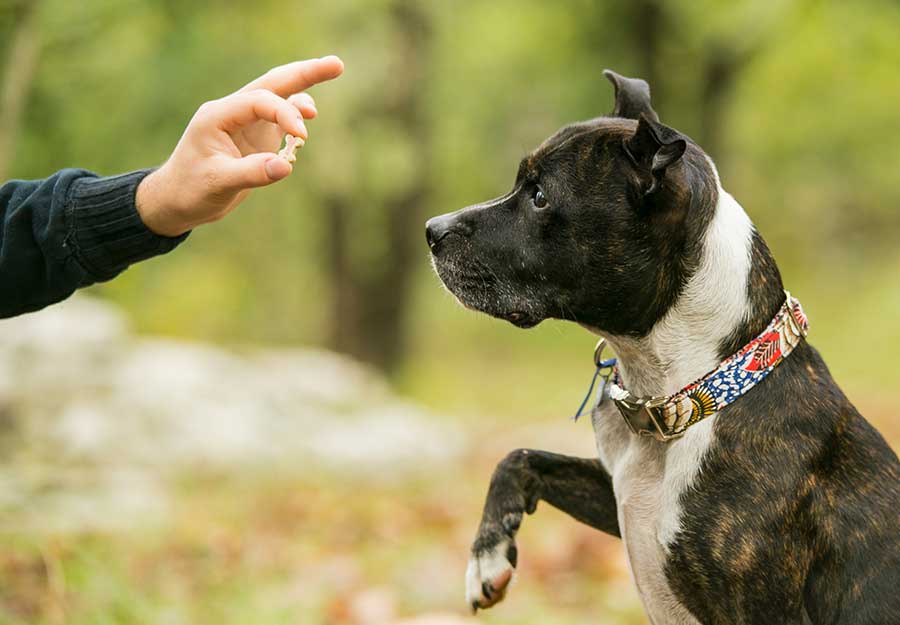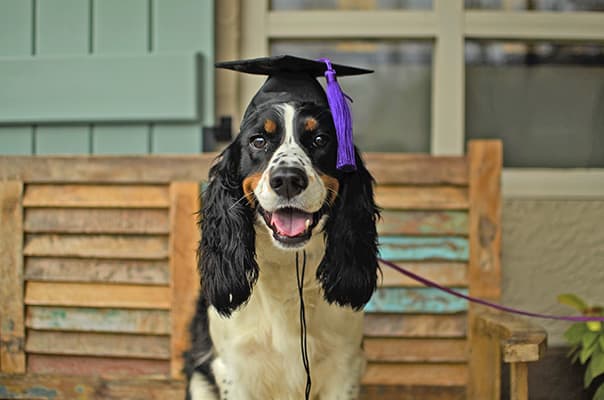Unlock Your Canine's Prospective: Proven Canine Training Methods for Success
Reliable pet dog training is a nuanced process that pivots on comprehending canine behavior and using clinically backed strategies. By including positive support, establishing clear commands, and focusing on socializing, dog proprietors can cultivate an effective relationship with their pet dogs.
Comprehending Pet Habits
Recognizing canine actions is vital for effective training and promoting a favorable connection in between dogs and their proprietors. A comprehensive grasp of canine body movement, vocalizations, and social communications is essential for acknowledging their emotions and demands. Dogs interact largely through non-verbal hints; for instance, a wagging tail may suggest exhilaration, while pinned ears can signal concern or entry.

Furthermore, environmental factors play a significant duty in forming a pet's habits. Modifications in routine, new environments, or the visibility of unknown individuals can lead to stress or anxiousness in pet dogs. Acknowledging these triggers enables owners to minimize negative reactions and develop ideal training methods.
Eventually, a deep understanding of pet dog actions lays the foundation for effective training techniques, enhancing both behavior and the general bond in between the pet dog and its owner. dog training near me. This knowledge is vital for cultivating a well-adjusted, delighted canine buddy
Favorable Reinforcement Strategies
Reliable training depends greatly on positive support strategies, which have been revealed to generate considerable results in forming desired actions in canines. This approach includes rewarding a pet for displaying details habits, therefore increasing the possibility that these behaviors will certainly be duplicated. Rewards can take numerous forms, consisting of deals with, praise, playthings, or play, depending on what encourages the individual pet dog.

It is important to gradually terminate incentives as the canine learns the actions, transitioning to periodic reinforcement. This approach preserves the behavior with time while stopping reliance on consistent benefits. By focusing on favorable reinforcement, instructors can cultivate a trusting connection with their dogs, advertising a cooperative and healthy and balanced training atmosphere that enhances general obedience and efficiency.
Establishing Regular Commands
An essential aspect of successful pet dog training is the establishment of regular commands. Consistency in commands is crucial for efficient communication between the trainer and the pet dog. When commands are consistent, canines find out to associate certain words with desired habits, which increases the training process and improves understanding.
To develop consistent commands, it is necessary that all family members make use of the same terminology and motions. If one individual makes use of "sit" while another states "rest down," it can develop confusion for the canine. Select clear, unique words for commands and make certain everyone associated with the pet dog's training abides by these selections.
Additionally, repetition is essential. Strengthen commands via constant practice, guaranteeing that the canine gets adequate possibilities to react correctly. When a dog successfully complies with a command, instant positive reinforcement must comply with. This might be in the type of deals with, appreciation, or play, strengthening the connection between the action and the command.
Finally, be client. Establishing regular commands requires time and initiative. With commitment and clearness, you will aid your pet create a strong understanding of expectations, inevitably bring about a mannerly buddy.
Socialization and Direct Exposure
Mingling a pet dog is vital for fostering a certain and well-adjusted buddy. This process entails subjecting your dog to a selection of atmospheres, people, and various other animals to create their social skills and adaptability. Early socializing, ideally in between the ages of three to fourteen weeks, is crucial, as it lays the foundation for a canine's future actions.
During socializing, goal to provide favorable experiences in different setups, such as parks, busy roads, and homes with other family pets. Introduce your pet dog to various stimulations, including noises, views, and smells, making certain that each encounter is fulfilling. This exposure aids mitigate concern and anxiety, leading the way for a much more resistant dog.
Taking part in regulated group play sessions with various other dogs can likewise boost social skills, instructing your pet dog suitable communications and borders. Always check your dog's comfort degree throughout these experiences, gradually boosting direct exposure as their confidence grows. Bear in mind, the objective is to create an all-round pet dog that flourishes in diverse scenarios, advertising a harmonious relationship with both people and various other pets. Focusing on socializing will considerably contribute to your pet dog's total joy and behavior throughout their life.
Conquering Common Educating Difficulties

Dogs may battle to concentrate in unknown or active settings. Gradually desensitize your pet dog to disturbances by starting training in a quiet atmosphere and gradually presenting even more stimulations as they become competent.
Furthermore, behavior concerns like leaping or too much barking can become aggravating. Address these by showing alternate actions, such as resting steadly when welcoming visitors. Uniformity and perseverance are crucial; reinforce desired behaviors regularly and prevent scolding, which can result in confusion.
Finally, recognize that each canine is distinct, and training timelines may vary. Tailor your approach to your dog's individual demands, and look for specialist support Recommended Site if needed. With determination and the ideal methods, conquering these difficulties can lead to a trained, satisfied canine buddy.
Final Thought
In final thought, unlocking a pet's possible requires an extensive method that incorporates an understanding of canine actions, the application of favorable reinforcement puppy program techniques, and the facility of constant commands. Early socialization and direct exposure to diverse environments better boost a canine's adaptability and self-confidence. By attending to common training obstacles with tailored strategies and perseverance, a harmonious and cooperative partnership between pet and handler can be promoted, ultimately resulting in a mannerly companion capable of prospering in different scenarios.
Efficient dog training is a nuanced procedure that hinges on comprehending canine behavior and utilizing scientifically backed methods.Understanding pet dog behavior is crucial for efficient training and cultivating a positive connection between canines and their proprietors.Effective training depends greatly on positive support techniques, which have been revealed to yield considerable outcomes in shaping preferred habits in dogs. When commands are uniform, pet dogs find out to associate certain words with wanted behaviors, which speeds up the training procedure and this article enhances understanding.
In final thought, opening a pet's potential requires a detailed approach that incorporates an understanding of canine habits, the application of favorable support strategies, and the establishment of consistent commands.